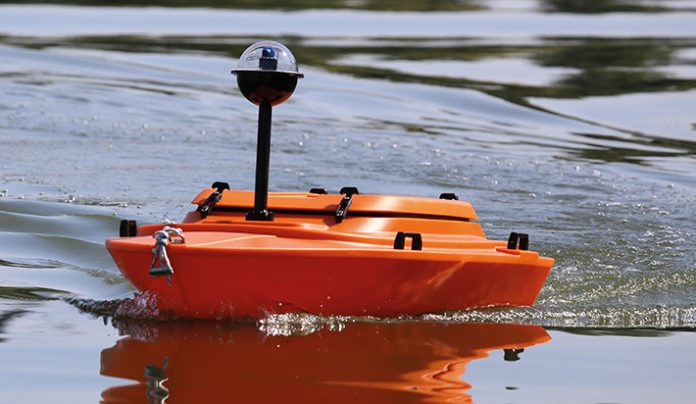Novel field instrumentation allows for sampling and accurately monitoring E.coli concentrations in watersheds, reservoirs, receiving water bodies and throughout the wastewater treatment process.
By Dan E. Angelescua and Andreas Hausot
Climate change trends, increasing urbanization and fresh water scarcity in large parts of the world are creating significant pressures on the available surface water resources. Contamination and pollution from wastewater plant effluent, combined sewer overflows (CSO), wild animals and agricultural activities can be an important health risk particularly in sensitive areas such as near drinking water intakes, at bathing areas, or at aquaculture sites. Water reuse is being contemplated in many countries, and is already implemented at certain sites, for applications ranging from irrigation for agriculture and public green areas to drinking water use.
Bacterial contamination from animal or human waste can have major health implications, with associated hydric diseases ranging from relatively benign conditions like diarrhoea to deadly infections. The World Health Organization as well as regulatory bodies in Europe, the United States and ISO norms advise regular monitoring of faecal indicator bacteria, the most common contamination tracer being Escherichia Coli (E.coli). The presence of such low-resistance indicators confirms presence of faecal pollution, acceptable levels of contamination depending on the intended water use.
Reliable quantification of E.coli in fresh waters is therefore paramount for health risk management. The approved laboratory methods that are employed on large scale today require manual sampling, refrigerated sample transportation to a facility within a specified holding time, use of standard laboratory protocols and data interpretation. This procedure is prone to human error as well as sample degradation between sampling and quantification. Even more importantly, results are only available 24 to 72 hours later (depending on method), which is often too long for operational decision making, in a risk management context.
Here we describe different uses of the ALERT products that have recently become available from Fluidion, a French manufacturer specializing in rapid field instrumentation for sampling and measuring different types of pollution. Such instruments, available in both in-situ (ALERT System) and portable (ALERT LAB) configuration, enable rapid field quantification of E.coli, with accuracy levels that are similar to those of current laboratory methods. Quantification typically requires 7-10 hours of analysis, but results may become available as quickly as in 2 hours, depending on the initial surface water E.coli concentration. ALERT LAB portable analysers can also be used in conjunction with a specialized sampling drone (FLUIDION DRONE) that allows up to 14 representative samples of 500-mL each, to be collected in a river, lake or reservoir. The combination of the two technologies enables, for the first time, rapid mapping of microbiological contamination in a large area, for evaluating heterogeneity, identifying localized pollution sources, and providing in-situ validation for hydrodynamic pollution models.
ALERT SYSTEM and ALERT LAB have both been used for monitoring bathing sites in the UK, and for identifying concealed pollution sources. In New York City (USA) the ALERT LAB is being used for informing microbial water quality in the Hudson river, at the future site of the Plus Pool (currently, a light sculpture is installed, with colours changing depending on measured water quality). CSO monitoring has been implemented using ALERT technology at multiple sites in the USA and Europe. In Paris (France) multiple ALERT Systems have been installed in the Seine river for several years now, performing daily bacterial baseline monitoring in preparation for the 2024 Olympic Games as well as active bathing water monitoring at the open water swimming site at La Villette (with multiple daily measurements of E.coli and enterococci). The FLUIDION DRONE has also been used in Paris to perform transverse surveys and rapidly assess pollution heterogeneity in the river, and to map in real time the bacterial pollution dispersion from isolated sources. In Lake Chelan (USA), ALERT has been used year-round by the Lake Chelan Research Institute and Washington Sea Grant for monitoring pump-out station efficiency at marinas. In Berlin, a city where open water swimming has been practiced for decades in the river Spree, E.coli concentrations have been monitored daily using the ALERT System. In Los Angeles, the technology has been used for monitoring drinking water intakes from the LA Aqueduct, as well as reclaimed water lakes. Monitoring reclaimed water quality at wastewater plants is also being performed using ALERT at multiple European sites.
The bacterial sampling and measurement technologies briefly described in this article have proven their reliability in very diverse operational installations, providing unique data that were previously difficult, or impossible, to gather. Bacterial monitoring in real-world situations, combining laboratory-like accuracy and fast time-to-result, represents ground-breaking progress in terms of health risk assessment and mitigation policy support, while simultaneously providing operational management tools to water utilities, municipalities and bathing site managers worldwide.
www.planet-ocean.co.uk



